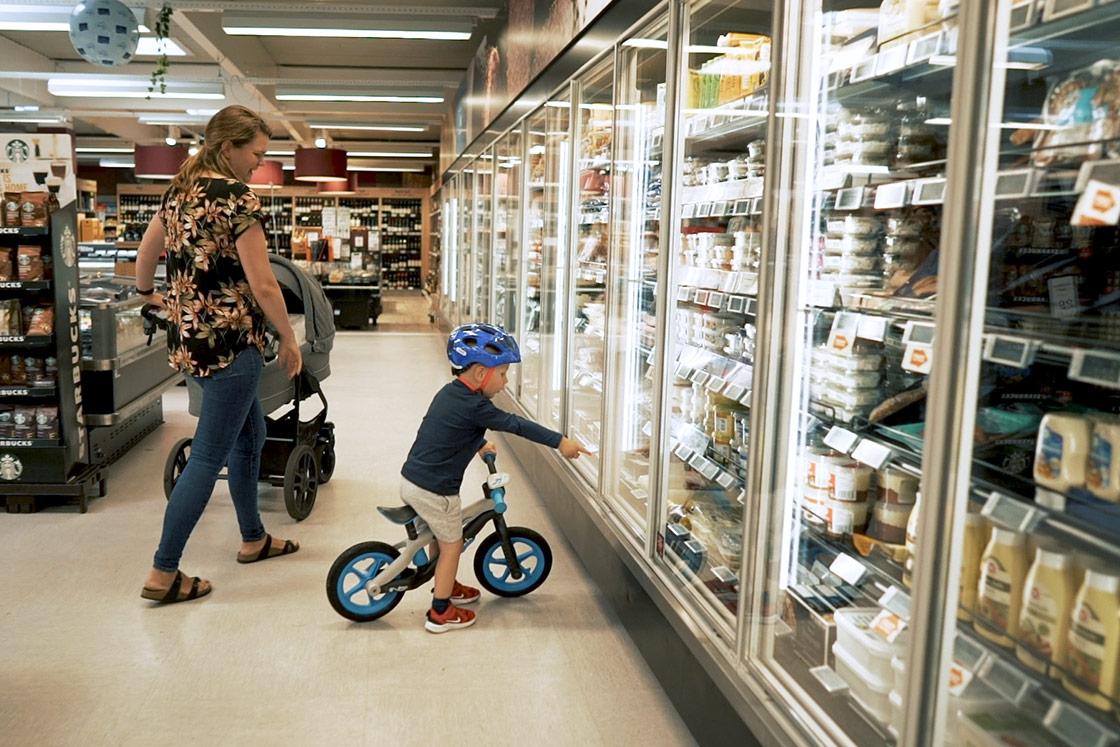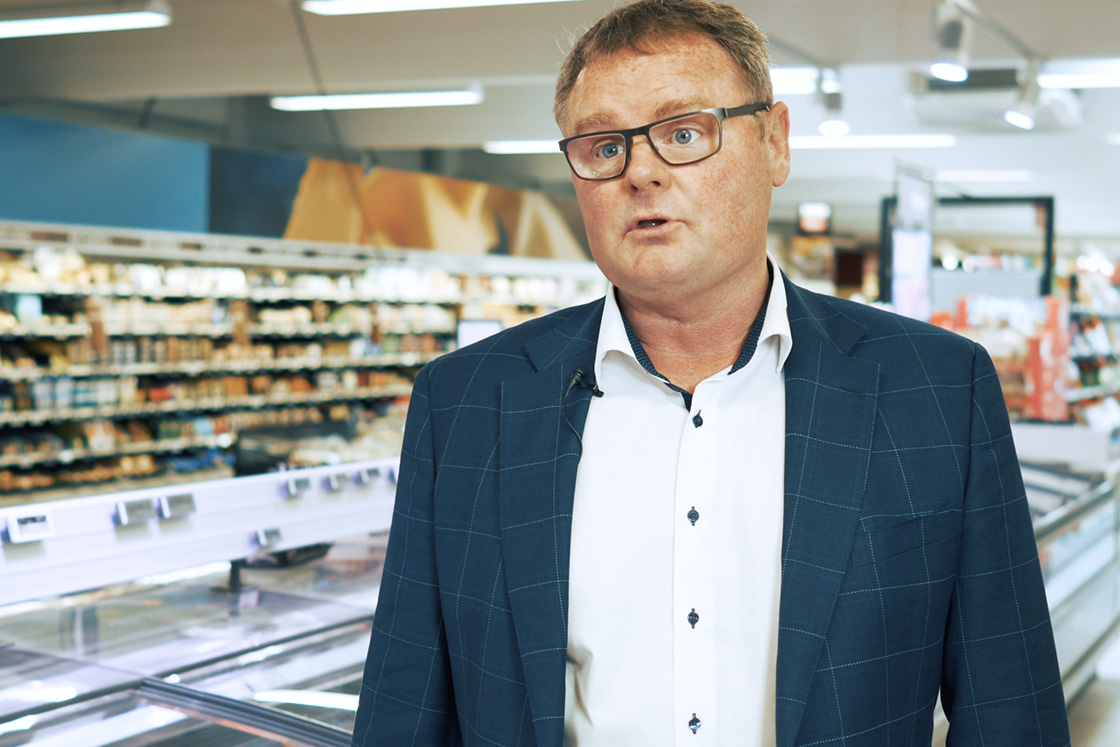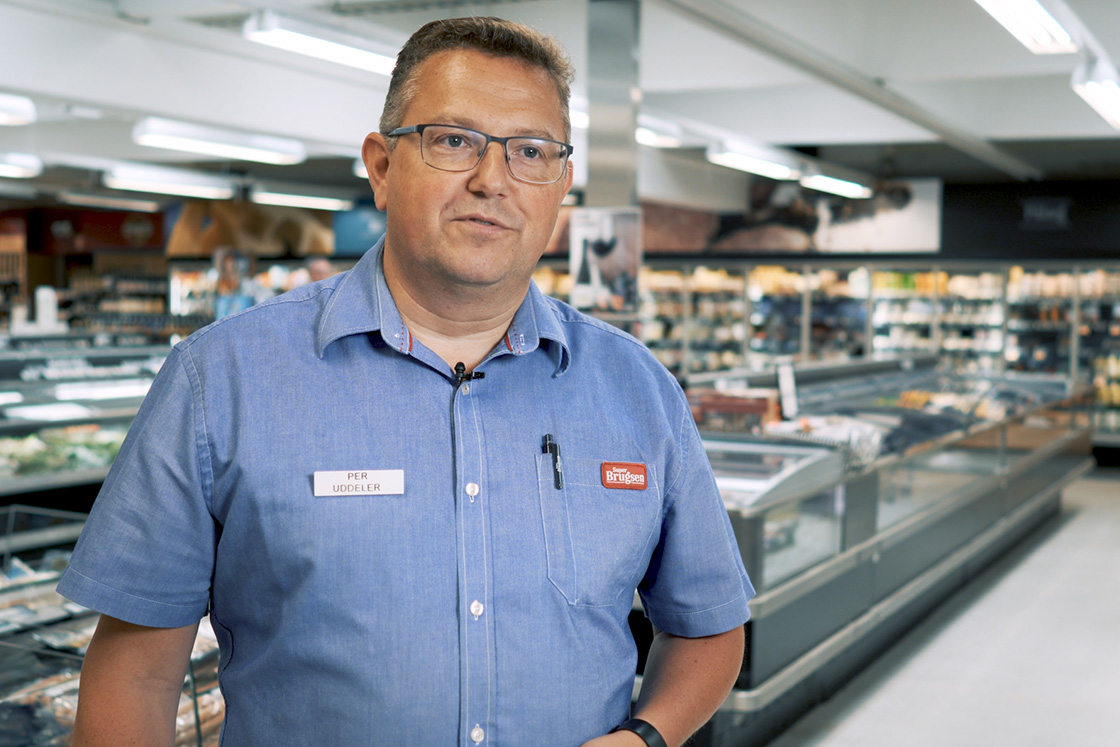A Danish supermarket fulfills 95 percent of its heating demand from its own cooling display cases. The chain has installed Danfoss heat recovery units and managed to halve its CO2 footprint in five years. Imagine if this was done in all supermarkets in the world.

Keeping food fresh makes the electricity meters run fast in a supermarket. Currently, supermarkets use 2 percent of regional electricity and, in each supermarket, up to 40 percent of the electricity consumption is used for cooling. However, a Danish supermarket has cracked the code to considerable energy savings by reusing excess heat that would otherwise be wasted.
Excess heat from the cooling display cases and freezers is harvested and heats up the store and the domestic hot water. Furthermore, the supermarket’s surplus heat is sent out to the local district heating network to heat up the nearby homes of the customers.
This heat recovery solution from Danfoss ensures efficient recovery of the heat from the refrigeration system, and there is hardly any waste heat. The system recycles 95 percent of the excess heat.

The local corporative supermarket chain, BALS – Brugsen for Als og Sundeved - has modernized 12 out of its 13 stores, all equipped with a heat recovery unit. For the past five years, they have invested in the green energy transition and spent more than 14 million Euro on updating its supermarkets.
“We do not want to waste anything, not even the excess heat from our cooling cases,” says Lars G. Andersen, Director, BALS - Brugsen for Als og Sundeved, and continues: ”Our timing for starting up our energy transition was right and now we are harvesting the savings. We have gained experience from our first pilot store in Høruphav and used this to optimize each of our stores continuously. Danfoss has helped us pave the way for more energy efficiency in our stores,” he says.
One of the 12 stores is Per Beierholm’s. Since the heat recovery unit was installed, he has saved 70 percent on the district heating bill.

“We were planning to change our cooling system anyway, so we decided to go for a CO2 based system and a heat recovery unit. And since the installation, we have saved around 70 percent on our district heating costs and 37 percent on electricity. The excess heat covers heating for our store and hot water. And the surplus heat we generate, can heat up around 15 households in the neighborhood,” Per Beierholm says.
Since 2015, BALS has reduced its carbon footprint by 43 percent covering electricity, water and heating.
“We have decided on a vision that whenever we invest, we always invest in green energy solutions. We want to take part and work for a greener footprint. We want to demonstrate that this kind of system works and let others know about the huge benefits. It feels good to be able to do something for the climate,” Lars G. Andersen says.
Each year, 100.000 supermarkets are installed or retrofitted all over the world.
“There are huge benefits for supermarkets when installing heat recovery in terms of savings potential and reduced carbon footprint. The bigger the store, the shorter the payback time with an average of only two years. It’s the cheapest heat a store can get. The added benefit is that refrigeration systems can become an integral part of the distributed district heating network,” says Hans Ole Matthiesen, Global Marketing Director, Danfoss Cooling.
How does it work
|
In the supermarket, the refrigeration system generates excess heat what would otherwise be wasted. The green heat recovery solution from Danfoss ensures correct recovery of the heat from the refrigeration system to:
There is hardly any waste heat - the system reutilizes 95 percent of the excess heat. The refrigeration system utilizes natural refrigerants, providing high efficiency with the lowest environmental impact. |

